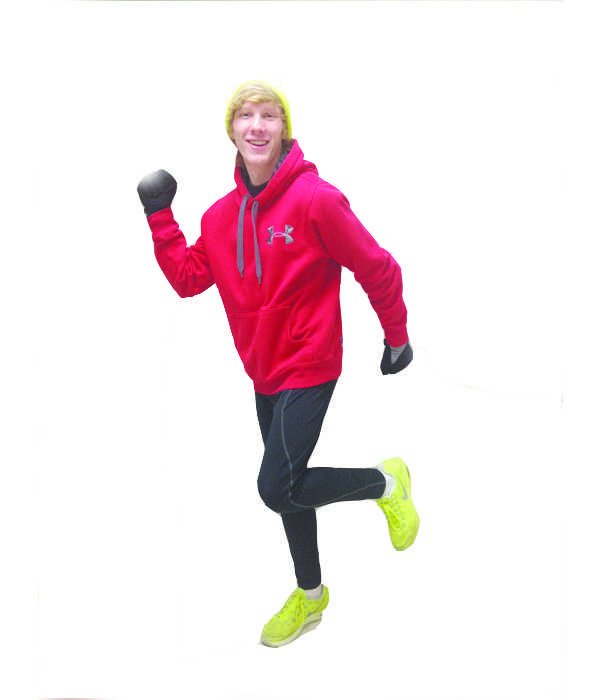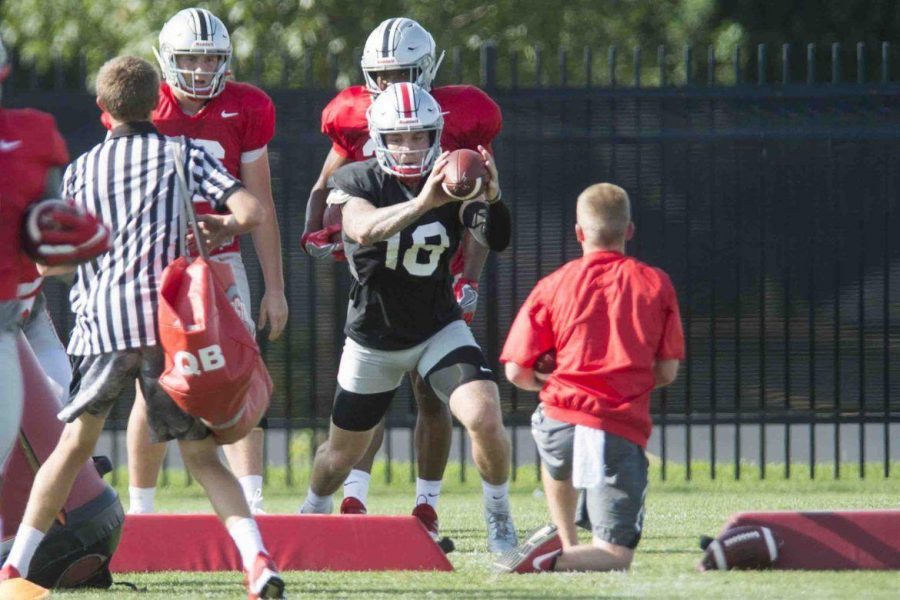Although the majority of winter sports players have the luxury of staying indoors for practices, track runners aren’t as fortunate.
While indoor athletes are still wearing shorts and complaining about how hot it is inside, track runners are piling on the layers to stay warm in the cold winter weather.
“I’ve got the ski mask, the tights, the leggings, then the gloves and the hat and the earmuffs. I’m prepared so no skin is showing,” sophomore Aviad Gebrehiwot said.
The challenge to stay warm in the winter is a difficult task. Whether it’s during, before, or after practice, athletes of every sport risk getting sick from being underdressed. The weather outside is no help at all, consistently beginning at about 30-40 degrees each morning and warming up to the mid 50s at most.
“As Mom and Dad have always told you, if you get too hot, you can always take articles of clothing off, but if you don’t have enough clothes, you can never find extra clothes to put on if you don’t have them,” head track coach David O’Hara said.
With the temperature dropping as we reach some of the coldest months of the year, it is important that students wear the appropriate clothing during the day and at practice to keep warm.
“I wear uggs, yoga pants, fuzzy socks and sweatshirts,” junior Elizabeth Manthos said.
Students wear yoga pants, jeans, hats, gloves, scarves, North Faces, long socks and long sleeve shirts to stay warm during these winter months. The most important thing on your body to keep warm is your head.
With the coldest months of the year approaching it is important that students come prepared for whatever the weather will bring.
“[I wear] sweatshirts and sweatpants because they’re warm and it’s cold in the winter,” freshman Aaron Boyd said.
There is also a huge price to pay when it comes to keeping warm. The insulated clothes that athletes wear can be outrageously expensive. Jackets can range from $40-$100, excluding the prices of North Face jackets, which are usually about $100- $200 depending on how nice the jacket is.
Adding to that, pants range from $30-$70, gloves are about $30, Under Armour gear ranges from $50-$90, and hats range from $20-$30. Before you know it you’ve spent as much on one outdoor outfit as you do on a whole shopping trip.
With the prices of winter clothes and the temperature of the winter months dropping it’s no wonder students are having a hard time keeping warm.
“70% of your heat loss comes off of your head, so make sure you always have a hat for these winter sports and at the end of practice bring something dry so you’re not standing in damp, wet and sweaty clothes,” O’Hara said.







